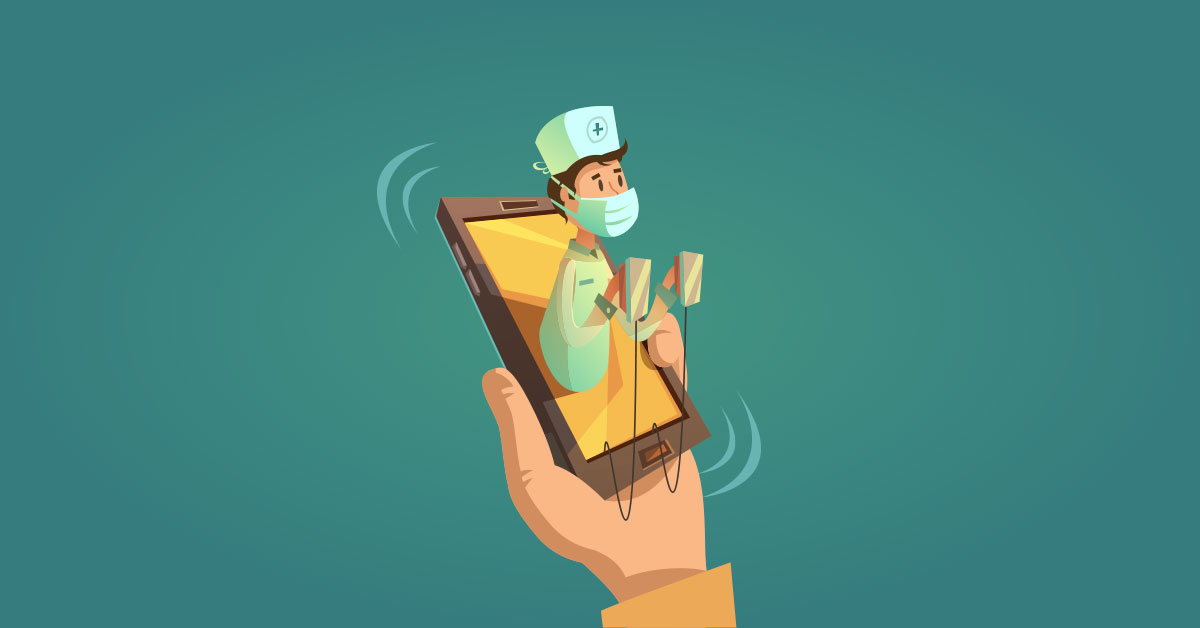
As the Coronavirus Rages On, Telemedicine Emerges as Potential Permanent Method of Care
In a previous article, I mentioned that my primary care physician had switched from face to face consultation to telemedicine, due to the novel Coronavirus. Since then, I have seen more and more instances and cases of care providers using this method of treatment and it gave me the idea for an article that explores this method of treatment and its place in our healthcare ecosystem.
Now, telemedicine is not a new concept. It doesn’t matter whether you are in the healthcare industry or not, you know what telemedicine is. What we don’t know and what we’re learning is that it can be a game changer during this time of uncertainty and fear.
First, let’s look at fields that telemedicine has easily replaced in-person meetings with. I can personally attest to mental health. I see a therapist occasionally and our meetings are usually in his office. Due to the Coronavirus causing him to have to shut his office down, we’ve been meeting either through a phone call or a zoom meeting. It hasn’t changed how my treatment works. It is just as effective as in-person. But doing it this way, takes me, him and all of his clients out of the way of potentially getting sick.
In this same way, a lot of other medical fields can be treated through telemedicine. Dermatology for example. Or Pediatrics. There are several other fields of medicine that could be included as well, but for most of them, there is testing required, which would necessitate an initial face to face visit. However, the follow up and any treatment thereafter could be performed through telemedicine.
This type of treatment can be used for the Coronavirus as well. Once the patient comes in, tests positive and is admitted, unless it is absolutely necessary, the healthcare providers don’t need to put themselves at risk and interact face to face with the patient. They can use telemedicine technology to get updates on the patient and provide treatment that way.
As mentioned in the previous article, the Coronavirus has overwhelmed the US healthcare industry. The healthcare providers are barely keeping up with the demands placed on them. If they get sick, it would be a crushing blow to the environment that they’re practicing medicine.
We also know that the Coronavirus can be passed in a multitude of ways and it is extremely contagious. The numbers that I’ve heard have ranged from one carrier getting three others sick, to one carrier getting eight others sick. Either extent is too many people getting sick. In a caregiving environment, this could mean if a healthcare provider gets sick, they could end up getting their fellow care providers sick. Then they might infect whomever else they interact with as well.
This is why telemedicine is a smart way of dealing with Coronavirus patients. While there will be that initial interaction during testing, as long as proper precautions (such as masks) are taken during it, the risk of being infected is minimal, since there won’t be repeated interactions.
There is also the case of revenue saved. Since, during the non-pandemic, regular life situations, the patient won’t have to travel or take off half a day from work (instead being able to just take a 30 minute to 1 hour break) to visit the care provision center, they will save time and money. In the case of the care provision center, since they can save the time of having to do any sort of manual data input (since the patient can just do it online), they will be less stressed and they can schedule more patients, which will lead to increased revenue.
But of course, those are things to be concerned about at a later date. Right now, the main reason to focus on telemedicine is because it lets us complete our main goal: keep people safe. As it has been repeatedly stated by healthcare professionals, the number one priority should be to flatten the curve. While wearing masks and washing hands is fantastic, it is important that we be as vigilant as possible in this pursuit. Telemedicine is the tool that could be the game changer in this “war” we are fighting.